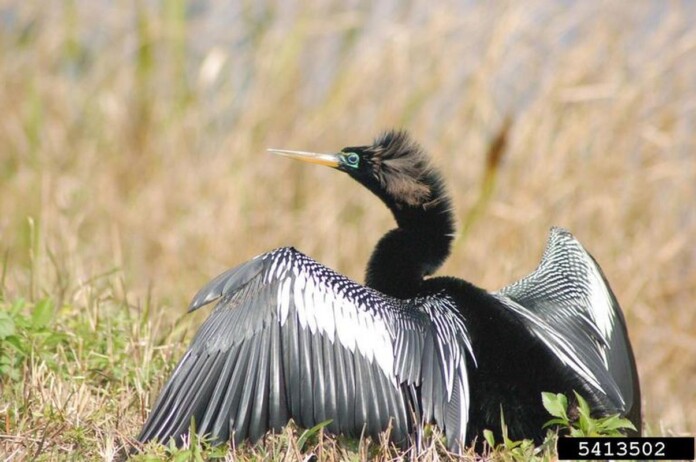In winter of 2022, Maine was accorded the honor of a visit from a Stellar’s sea eagle, a truly incredible raptor with an 8-foot-wingspan that may have been diverted from its migratory path as far away as Russia.
Now, it’s the turn of this strange, long-necked “devil bird,” to send the state’s birdwatching community into a flurry of activity, as it’s the first-ever sighting in Maine’s history.
Related to the double-crested cormorant, this is an anhinga, a piscivorous bird native to South and Central America. Its breeding range extends into Florida, the Gulf Coast, and even as far as the Carolinas.
The out-of-place creature started making waves on July 23, when a woman posted a photo of it in a local Facebook group after seeing it loitering near a pond in Somerville, about 70 miles north of Portland.
Tabatha Holt did her own research and cleverly concluded it wasn’t a cormorant, as some in the comment section had suggested, but rather an anhinga “a little out of her usual range.”
At least 80 people were able to go and take a look at the anhinga, including Doug Hitchcox, staff naturalist for the Maine Audubon Society.
“Climate change is a big driver in northward expansion of bird ranges, and this fits within that pattern,” Hitchcox tells the Portland Press Herald. “It is definitely a factor, but it’s hard to know with a sample size of one. A lot of these waterbirds have weird expansions and retractions.”
Indeed, Hitchcox described this time of year as the “rarity season” when “just about anything can show up,” he said, this time to Bangor News Daily.
Their name comes from the Indigenous Tupi people of Brazil, according to Sarah Kuta of Smithsonian, who called them “devil birds” or “evil spirit of the woods.” Their no doubt striking appearance has also led to them being dubbed “water turkeys” and “snake birds” because of the way their long, black, serpentine necks seem to move like snakes through the water.
This article by Andy Corbley was first published by The Good News Network on 5 August 2024. Lead Image: An adult male Anhinga, credit – Joy Viola, Northeastern University, Bugwood.org / licensed under a Creative Commons Attribution-Noncommercial 3.0 License..
What you can do
Help to save wildlife by donating as little as $1 – It only takes a minute.

Leave a Reply